#manual exposure
Explore tagged Tumblr posts
Text

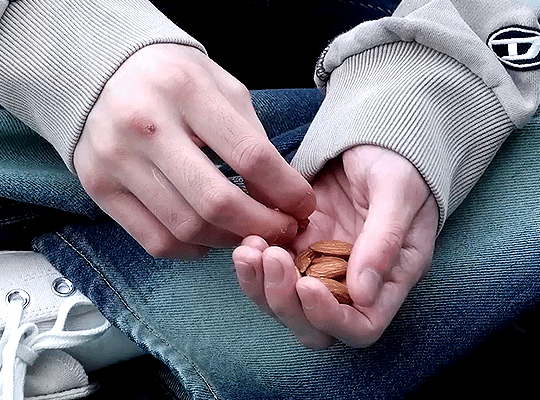


Agust D 'Amygdala' MV & Jacket Shoot Sketch
#agust d#min yoongi#bts#suga#bts suga#bangtan#bangtan sonyeondan#bts gifs#suga gifs#my gifs#his handssssssssss#these are all over the place#exposure was weird in this video#oh well#anyway off topic but it made me smile that he has his camera in manual mode and raw#like obviously i knew he's a photographer but i didn't notice when i was watching the vid initially that he was shooting in manual and raw#and while i was making that gif i saw it and it made me smile#basically all that just means he knows what he's doing#he's also got it set to manual focus which fuckin SWOON#i can't for the life of me shoot in mf lol#amygdala
74 notes
·
View notes
Text
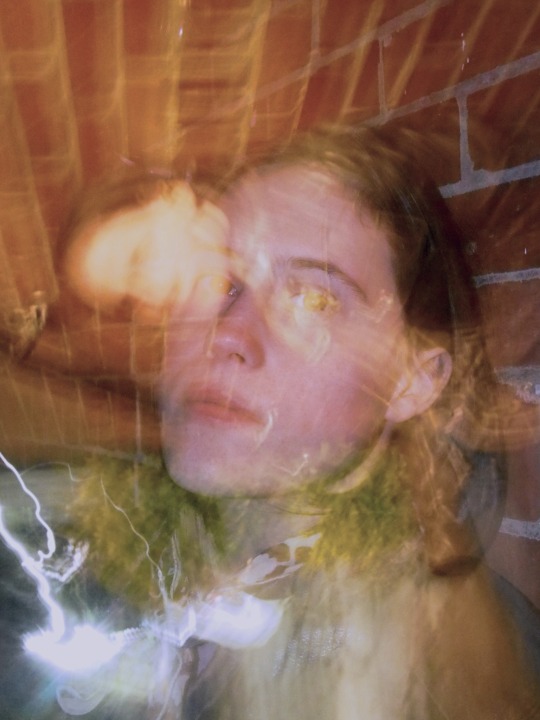
and another of my best friend from last night
#itellyouthistobreakyourheart#photography#anarchist#transsexual#long exposure#photo#original photography on tumblr#original photographers#digital camera#olympus om-d#manual photography
7 notes
·
View notes
Text
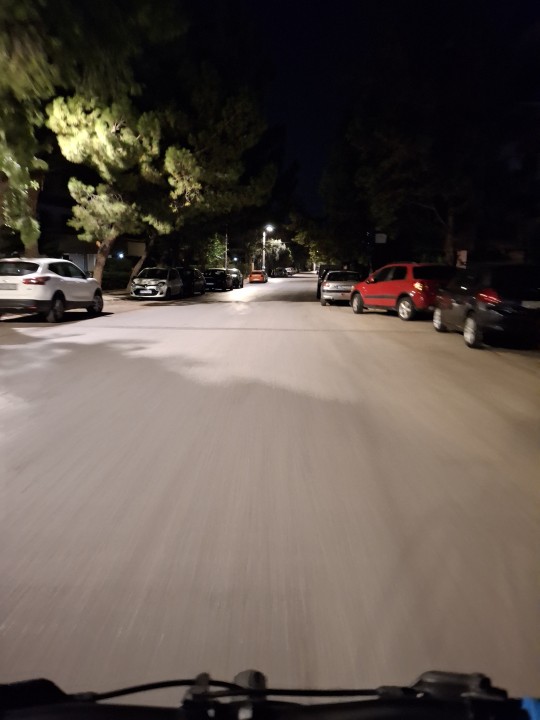
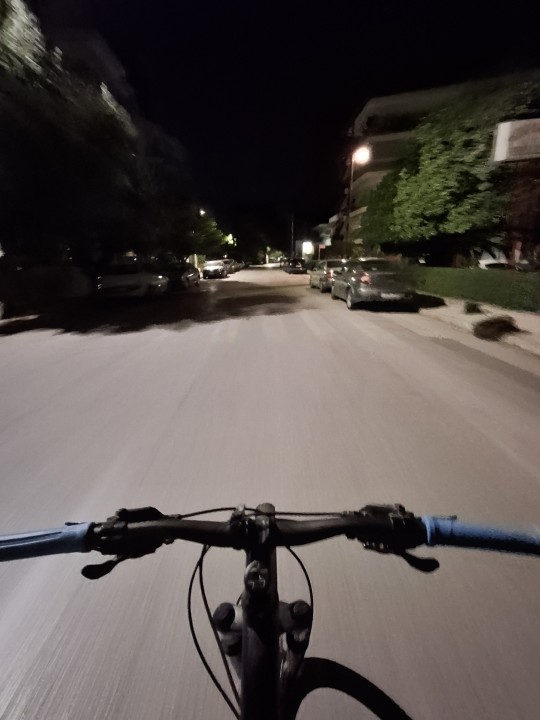
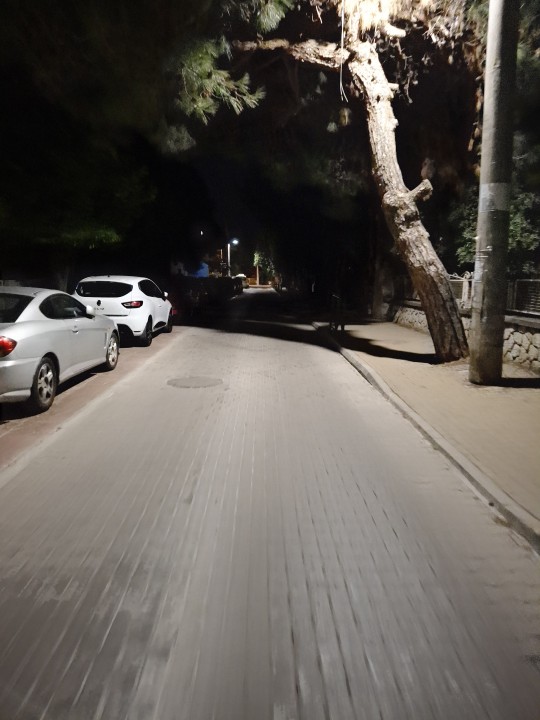
6:30ish am ride pics
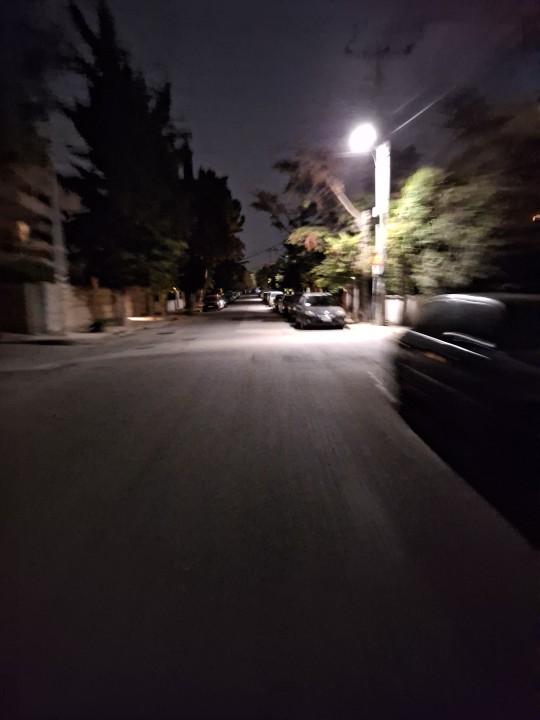
#personal#last one was darker and moodier but i didn't have time to adjust manual exposure while riding without hands#cause i prefer my head not broken#anyway i thought the pics were a chill mood#early mornings beloveds
7 notes
·
View notes
Text
to be honest i have mixed feelings on the idea of the freedom fighters ever coming back . because yeah i like them and i wouldnt mind getting to see them again. but the version of the sonic world theyre associated with is so different from the games that i feel like they cant just be thrown into the games or idw sonic with no changes. like maybe they could be introduced as a separate branch of the restoration or something but i feel like the group dynamic would be a bit different from before considering in every continuity theyre in sonic and tails are part of the freedom fighters too and have known those guys forever. or maybe they could just pretend theyre old friends of sonics who have been here the whole time and just havent shown up onscreen before but personally i dont really like that idea and cant put into words why. idk
#also as much as i like the freedom fighters i find it kinda silly when people act like theyre these super obscure forgotten characters#who dont have much content#like archie sonic was long as hell and the freedom fighters were also in one of the tv shows . no shortage of content there#and sure the freedom fighters may not be the Most popular characters in the sonic fandom but theyre still pretty well liked#sally especially i see a lot of fanart of going around#also bugs me when people talk like sega abandoned the freedom fighters or replaced sally with amy or whatever#i feel like people saying stuff like that were kids in the 90s who had the comics and cartoons as their main/only exposure to sonic#which is fine . and its also fine to be disappointed that these characters arent used anymore#but i feel like as a result of that some of those people dont really get that the freedom fighters werent part of game lore#and its not that sega abandoned them its that they never really used them to begin with#i mean i cant blame people for getting confused because wasnt amy referred to as sally in old sonic cd manuals. idk why they did that#anyway speaking of the amy vs sally stuff. they were created around the same time forcompletely different areas of the franchise#and their actual personalities and roles theyre meant to fill are pretty different . no amy wasnt made to replace sally#they literally only get compared because theyre both girls who like sonic .#and because again some of these people dont really get that sally wasnt in the games ever
11 notes
·
View notes
Text
What if Lin Manuel Miranda somehow manages to make an appearance in Life Is Strange: Double Exposure
7 notes
·
View notes
Video
Untitled by lemonhats Via Flickr: Fuji HD-P Fujinon 2.8/38mm Fujijilm Natura 1600 On tumblr: theatreofthemundane.tumblr.com On Instagram: lemonhats
#Fuji HD-P#Fujinon 2.8/38#Fujicolor Natura 1600#classic camera#vintage camera#heavy duty camera#water resistant#construction camera#38mm f2.8 fixed prime lens#iso 1600#35mm color print film#grainy#expired film#analogue photography#film photography#traditional photography#auto exposure#manual focus#film is not dead#film community#film forever#film is alive#believe in film#shoot film#fpp-er#walking#Tochomae#Shinjuku-ku#Tokyo-to#Japan
3 notes
·
View notes
Text
The silent humiliation of going through photos you took and realising you still had ISO set to 4000 when it wasn't nighttime anymore.
#mine#can you believe i used to set exposure manually with analogue cameras when i was still in university?
2 notes
·
View notes
Text
Star Photo Settings for DSLR Cameras
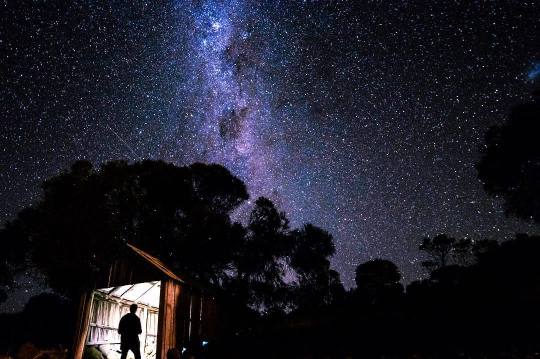
View On WordPress
#adventure photography#aperture settings#astrophotography#astrophotography guide#capturing stars#celestial photography#composition in photography#creative photography#DSLR camera#DSLR settings for stars#exploring the night sky#exposure techniques#focusing at night#ISO settings#landscape photography#light painting#long exposure#low light photography#manual camera settings#manual focus#Milky Way photography#nature photography#night landscape#night photography#night photography essentials#night photography settings#night photography tips#night shooting#night sky#outdoor photography
6 notes
·
View notes
Text
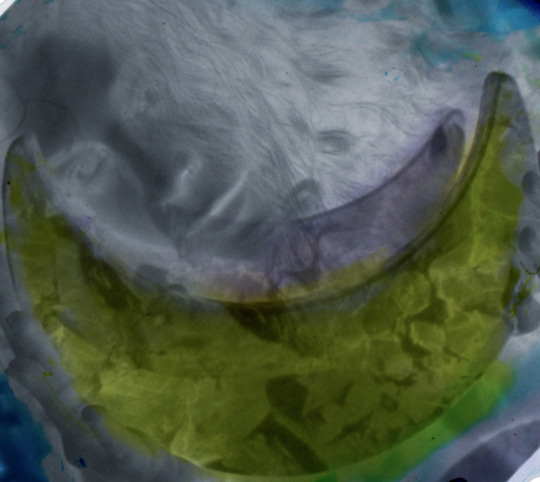
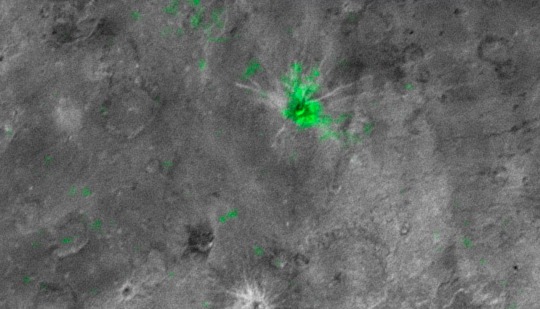
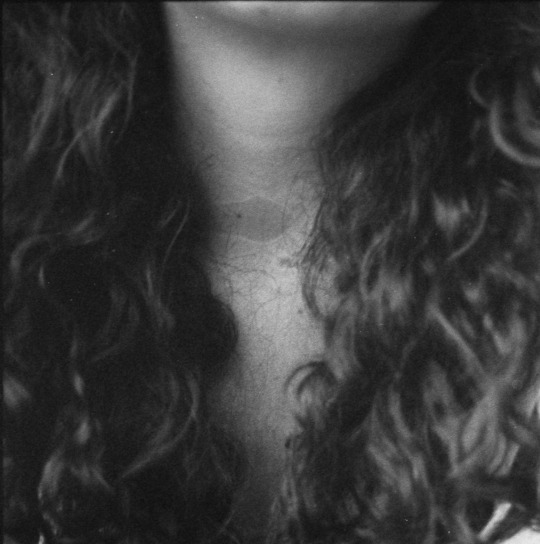
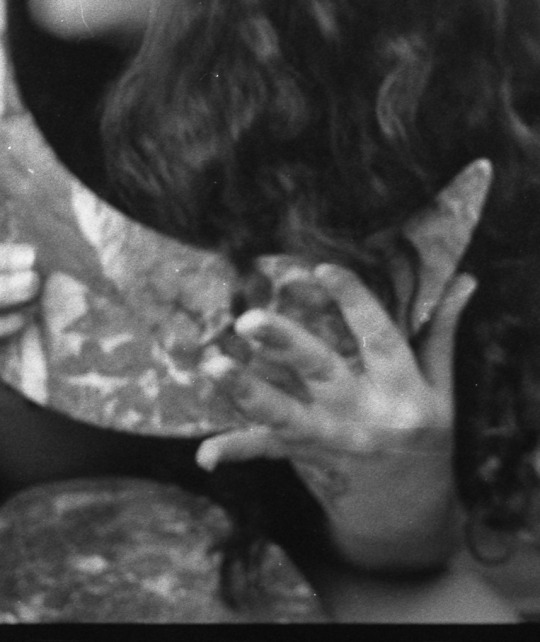
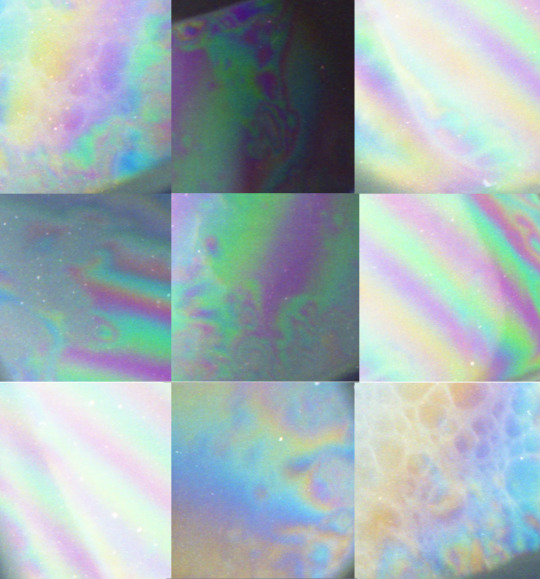
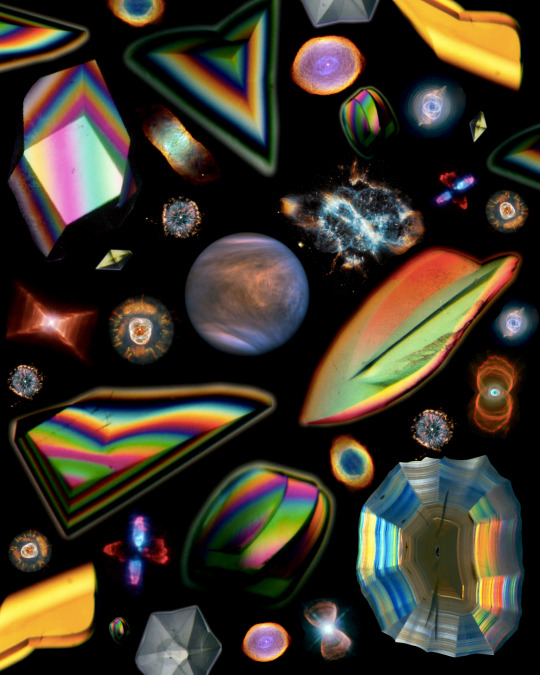
#35mm film#film photography#35mm#35mm photography#photographers on tumblr#analog#film grain#film#artists on tumblr#double exposure#negativo#negativo 35mm#color negative#color negative film#35mm color film#analog photography#kodak gold 200#collage#analog collage#colagem manual#excerpts#fragments#lit#spiriti#ciaospiriti#marianasassine#mariana sassine
2 notes
·
View notes
Text
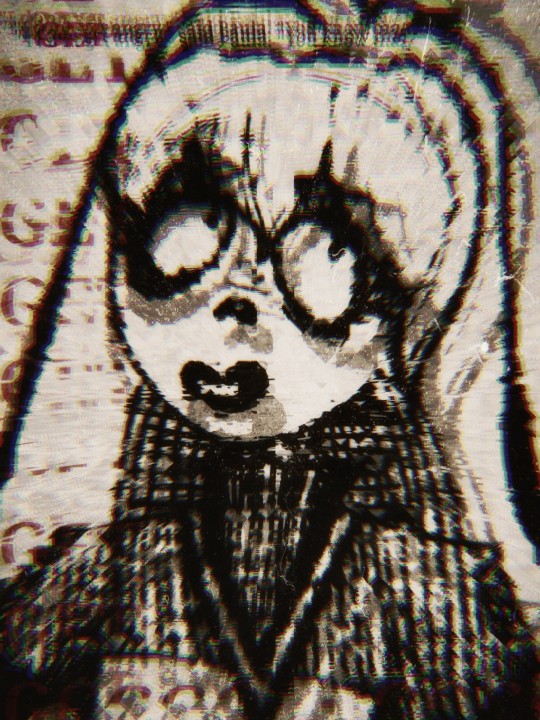
"I don't get angry," said Paula. "You know that."
#pdga concepts#doodles#i actually manually did the glitching with python and double exposures#I think it looks so pretty
3 notes
·
View notes
Video
Untitled by lemonhats Via Flickr: Fuji HD-P Fujinon 2.8/38mm Fujicolor Natura 1600 On tumblr: theatreofthemundane.tumblr.com On Instagram: lemonhats
#Fuji HD-P#Fujinon 2.8/38#Fujicolor Natura 1600#classic camera#vintage camera#heavy duty camera#38mm f2.8 fixed prime lens#auto exposure#manual focus#water resistant#construction camera#ISO 1600#35mm color print film#traditional photography#analogue photography#film photography#film is not dead#film community#film forever#film is alive#shoot film#believe in film#fpp-er#walking#Minato-mirai#Yokohama#Kanagawa#Japan#Cosmo World#amusement park
0 notes
Text
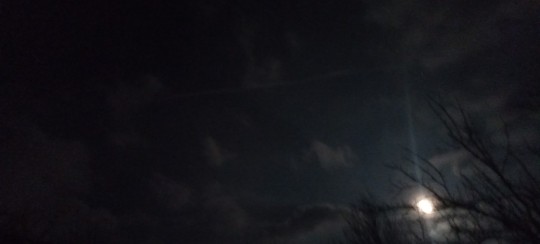
moon n clouds
#i got somehow really lucky with this photo cause we were just walking by and i only took one and it looks exactly how it looked#even though i did this on manual mode and just picked the exposure randomly#newyeartrip23
1 note
·
View note
Text
kinda freaked out that one of the control wheels on my camera is not working. I'm gonna try to disassemble it and see if I can fix it because I was shooting last weekend without being able to control aperture/ISO/shutter speed/exposure compensation manually and A Bitch Likes To Be In Control
#I reaaallllyyyyyyyyy like to have direct control over focus and depth of field#focus is still good bc that's on the lens#but let me take that aperture alllll the way out Please Please#hopefully it's serviceable? i like my camera I've had it for like 10 years now and I like taking it to inhospitable environments for cameras#it's been having more problems lately#(yes this is directly related to me taking it to the desert and the ocean and such)#but it's important to me to not have to be too precious with it#photography for me is more about having it with me when I see beautiful things or things I enjoy - I photograph while I hike. I don't hike#in order to photograph.#so I don't want something I really need to baby. and I don't wanna spend a thousand dollars lmao#also some newer cameras in this quality range seem to want to take more things away from you#i am particular about wanting a viewfinder (so nothing mirrorless) and wanting certain autofocus options#i usually don't shoot full manual bc most often my subjects are moving and I'm not fast enough to adjust for that / I don't enjoy it#but I do adjust ISO and aperture manually and let the camera pick the shutter speed#then adjust exposure comp or aperture if I need to
1 note
·
View note
Text
fuck
#vent#actually borderline#tw torture#tw death#we’ll long story short i’m homless and crashing on a friend’s couch#for two more weeks#which is incredibly stressful#can’t move in to my new place until the 14th#im not excited about moving AT ALL#glad i’ll be reunited with my cat#i just despise the manual labor (not to mention what it does to my disabled self)#and unpacking is stressful#also i had to soak all my clothes and shit in vinegar and pet odor removal#so i have to do that for the remainder of my clothes and like most of my shit that’s in my storage unit currently#that i have to move#whatever#everything is stressful#also i had therapy today which was good but also intense asf#we talked abt mom and deprogramming me and exposure therapy#super unfun
1 note
·
View note
Text
So you know absolutely positively nothing about photography
Cellphone cameras are fucking great. I love them. I love the ability to take photos whenever and wherever at basically zero cost.
Point-and-shoot cameras have always been awesome and accessible devices.
This is not a post shit-talking "basic" cameras. This is a post for people who have only ever used basic cameras who want to know at least slightly more about photography.
Because, the thing is, a remarkable amount of photography is math. And if you don't know it's math, it looks like a mystery. And you may be standing there snapping a photo with your phone that looks pretty good, but your friend with a DSLR looked at the sky, twisted a dial, and took three steps to the left and they took a photo of the same subject that looks like it belongs on a magazine cover.
How did they do that?
Probably math.
If you've come into possession of a DSLR camera and are disappointed that the photos you're taking aren't looking like the photos you thought came from DSLRs, I'm here to tell you about the math you may not know about.
What is a photograph?
At its most basic, a photograph is the result of light on a sensor. Let's consider a pinhole camera for a moment. A pinhole camera is a lightproof box with a piece of photographic paper on one side and a tiny hole in the other.
When you create a photo with a pinhole camera, you're using pretty much all of the math you would in a big fancy camera, just in a cruder form they are:
The sensitivity of the paper, film, or camera sensor to light (this is your "ISO" if you're using a digital camera or film). Light sensitivity can be easily changed on a digital camera, but on chemical-treated paper or film the sensitivity is predetermined and cannot be changed. If you want to change the ISO on an analog camera, you need to change the medium that's being exposed.
An opening to let light in - your F-stop, or aperture. The F-stop of a photo is how wide open the lens is to let light onto your film or sensor. In a pinhole camera, you have something that is theoretically a very very large F-stop because you have a very, very tiny opening to let light through (F-stops run in reverse - the bigger the number, the smaller the opening).
Exposure - your exposure is the amount of time you leave your sensor open to the light. The majority of photos you see in the world have exposure times that are measured in tiny fractions of a second, sometimes in thousandths of a second. If you're using photo paper in your pinhole camera, you may have an exposure time of minutes rather than tiny portions of a second, but your photo exposure will still depend on how long you want to leave your "lens" open.
Focal length - your focal length is a description of the relationship of the distance between the light source and the light sensor. You can manipulate this in a pinhole camera by making the camera longer or shorter. A larger focal length means a narrower field of view - it zooms in on the subject.
A pinhole camera is the simplest camera that lets you, the photographer, control all of the elements of a photo. This is, functionally, fully manual photography.
So what's the difference between all that and a cellphone camera?
Point-and-shoot cameras like those on cellphones give the user more limited control over these settings. For instance, think of a disposable camera. On a disposable camera, the photographer has control over one setting - the ISO of the film, which they can select at purchase. They can't control how wide the lens opens or how long it stays open, and the only way they can compensate for lighting that is a poor match to the ISO is flash.
Cellphone cameras are very much like a standard point-and-shoot. By default, users point their cameras, then shoot a photo. Many cellphones have a "pro" mode that will allow the user to emulate different ISOs or f-stops, but the sensors in cellphone cameras aren't as good as the ones in camera-cameras, and the lenses are very limited as well. Some cellphone cameras and point-and-shoot digital cameras WILL allow users to set longer exposures, and many cellphone cameras have multiple lenses which does allow for some lens effects, but they don't give a huge amount of control to the user.
Okay so let's say I've got my new shiny camera, what do I need to know?
For best results, you want your ISO to match the light you're shooting in. Low ISO is for bright light, high ISO is for low light. If you wanted to take snapshots of your family outdoors at disneyland in the summer, you'd buy 100 ISO film. When I used to shoot football games at night in oddly lit stadiums, I'd use 1600 ISO film. If you have a DSLR camera, there's a setting somewhere in there that tells you how to set the ISO. If you are shooting in relatively low light and the photos are turning out darker than you'd like *but* things are moving too quickly to use a longer exposure, you can bump up your ISO for brighter, sharper images but they will be more noisy and grainy than ones shot at a lower ISO. If you want clean, smooth, crisp images, your goal should be to shoot with the lowest ISO possible.
The Aperture of your camera lens determines your F-Stop. This acts like the pupils of your eyes. When it's really really bright out, your pupils shrink down to let in less light. When it's darker out, your pupils get bigger to let in more light. If you are shooting in low light, you want a low F-Stop, which means that your camera's lens is open really wide. If you are shooting in a bright environment, you want a higher F-Stop, which will mean the opening is very small. Since your F-stop interacts with the focal length of your lens, you will find that zooming in with the lens often makes images darker. To shoot clear images from far away, you need to be very conscious of your F-stop, your ISO, and ambient lighting conditions.
Exposure describes the length of time you set the camera to leave the aperture open. In many DSLRs this can span from 1/3200th of a second to infinitely long (the "bulb" setting means "aperture is open until you close it.") If you want sharp images of frozen motion, you want the fastest speed that you can get. Sports photography and photography of things like insects or milk crowns often use extremely short exposures to get sharp images. If you want blurry images you want slower speeds. If you want to take a photo in a low-light environment and capture motion within that environment - for instance, taking photos of cars on a freeway at night - you want slower speeds (if you want to do this in a brighter environment, like taking photos of a stream in the daytime, you want slower speeds and a specific kind of lens filter called a neutral density filter). When exposures are set to be longer than about 1/60th of a second, images with motion start to look blurry.
Focal Length determines the field of view of your subject. If you have a lens with variable focal lengths, this is called a zoom lens. A longer focal length zooms you in and a shorter focal length zooms you out. Lenses with fixed focal lengths are called prime lenses, and can't zoom in or out.
Depth of Field - your depth of field is a combination of the interaction of your focal length, your distance from your subject, and your F-stop. The depth of field describes the relative amount of space in a photograph that is in focus. A long depth of field means that much of the image plane is in focus. A short depth of field means that a narrow portion of the image plane is in focus. A low F-stop produces a narrow depth of field. A long focal length produces a narrow depth of field.
You can think of your camera as a tool that measures time and space. Your ISO and Exposures are measurements of time (how quickly the sensor senses the light, how long the sensor is exposed to the light), the F-Stop and the focal length are measurements of space (how wide the aperture of the camera is, how far the lens is from the sensor).
The pre-set modes on your camera, the ones on the dial that show a person running, flower, or a cloud, or a lady with a hat - these are generic settings that combine an ISO, exposure time, and f-stop that are likely to work well for outdoor action shots, landscape photography, cloudy light, and portraits. When you're using those pre-set modes, you control the focal length and not much else.
When you understand that the running person/action mode means low-ish ISO combined with high shutter speeds, you can start just setting your own ISO and shutter speed when you're shooting sports. When you know that portrait mode sets you up for low-ish f-stops, relatively quick shutter speeds, and mid-range ISOs, you can just start setting those things on your own so you can have more control.
"What about light metering?"
Since your camera is a machine that records light, light metering is pretty important. The light meter of your camera will tell you if your settings are "correct" for the amount of that the light sensor senses. In most modern cameras there is a light metering display on the bottom edge of the viewfinder that goes from negative to positive; if the meter shows that you are in the negative it means that your photo will be under-exposed (too little light will get to the sensor and the image will appear dark), if the meter shows that you are in the positive it means that your photo will be over-exposed (too much light will get to the sensor and the image will appear too bright - "blown out"). The way to correct for under or over exposure is to change the length of the exposure, making it longer for underexposed images and shorter for overexposed images.
What the light meter is doing is thinking about all of your settings and the lighting for you. It looks at the ISO, focal length, f-stop, light hitting the sensor, and planned exposure time and tells you what that combination of settings is likely to produce - something too bright, or something too dark.
When you are more experienced with photography, you get good at juggling these things on the fly and messing around with them more, which is how you can do the magic of looking at the sky, twisting a dial, taking three steps to the left, and knocking it out of the park with a picture.
It only looks like magic because you're doing a ton of math under the hood that is extremely non-obvious to people who are new to photography.
Anyway, here is a good guide to depth of field and what goes into it.
Here is a basic photography textbook that explains the principles that I've gone over here in a lot more detail with a lot better explanations. It's a film photography textbook, but one of the cool things about photography is that a lot of stuff from the analog era is still relevant in the digital area, and the basics haven't changed.
However all of that is about the *technical* aspects of photography. Photography isn't just a record of exposure time and focal length, so here's a basic photo composition textbook that talks about the artistic principles of photography.
2K notes
·
View notes
Text
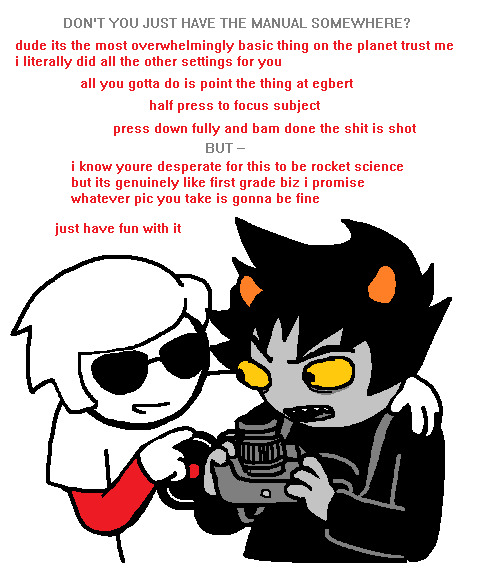


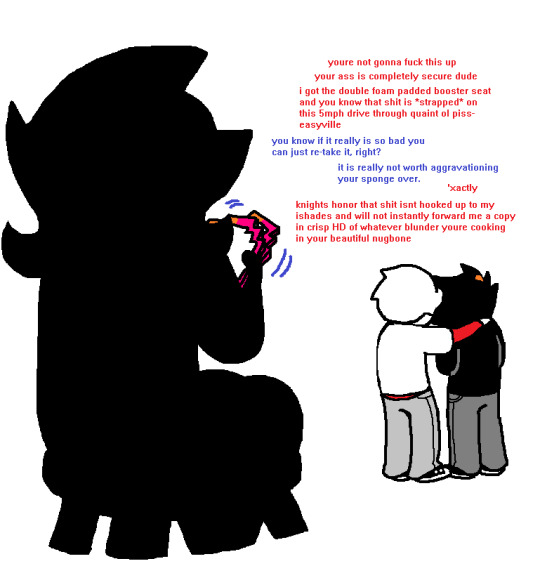
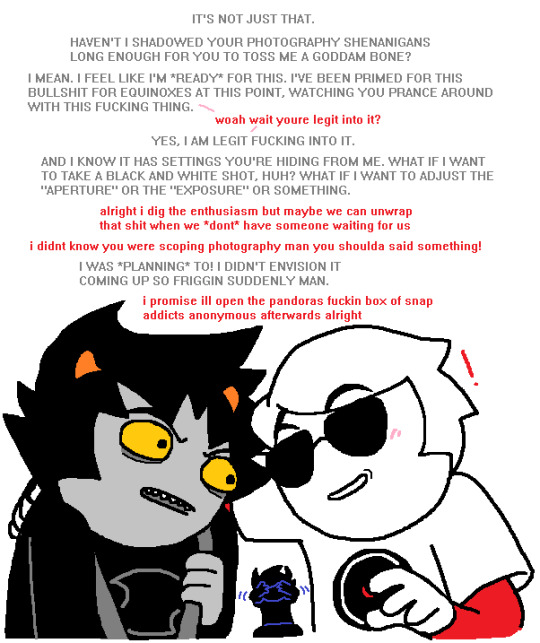
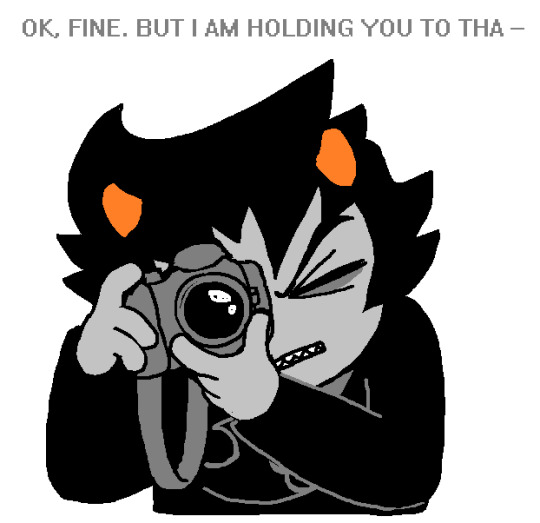
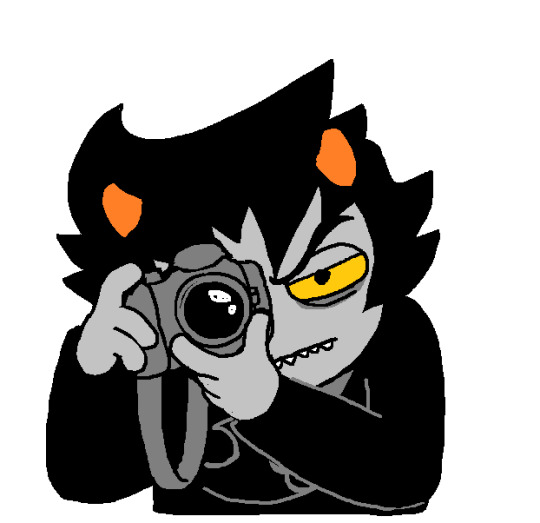


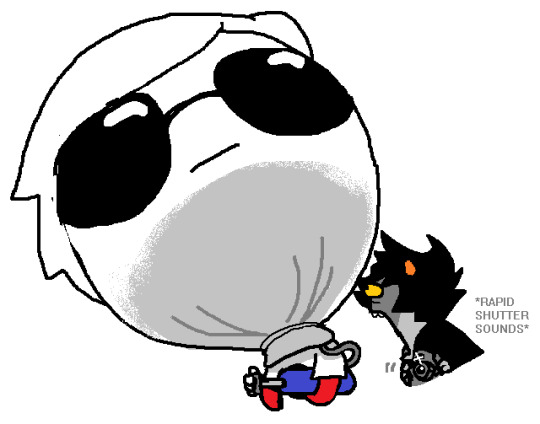

happy day of egbert
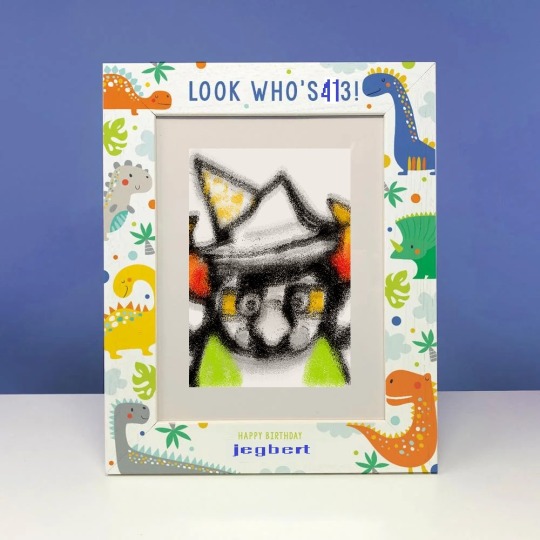

CG: DON'T YOU JUST HAVE THE MANUAL SOMEWHERE?
TG: dude its the most overwhelmingly basic thing on the planet trust me i literally did all the other settings for you
TG: all you gotta do is point the thing at egbert
TG: half press to focus subject
TG: press down fully and bam done the shit is shot
CG: BUT --
TG: i know youre desperate for this to be rocket science but its genuinely like first grade biz i promise whatever pic you take is gonna be fine
===
EB: yeah, come on karkat!
EB: i am only going to be the birthday bad ass for like, 24 hours total you know.
EB: longest birthday of my LIIIIIIIIFE. haha.
EB: oh hey, from one birthday-dooms day guy to another…
EB: i am pretty sure you understand the magnitude of what i just said!
===
CG: OH HEY. FUCK YOU.
CG: I'M JUST ACCOUNTING FOR THE LITERAL FUCKING INEVITABILITY THAT WHEN I TAKE THIS PHOTO, SOME INSIDIOUS LITTLE KARMA GNOME WILL FROLIC ONTO THE SCENE IN AN UNBELIEVABLE STROKE OF LOATHSOME SERENDIPITY TO BURY ME IN 12 CUBIC METERS OF FOOL-GRADE FUCKING IDIOT POWDER.
CG: AT WHICH POINT ANOTHER HEFTY BOULDER WILL BE ADDED TO THE BULGING MACRO-BINDLE OF SHAME YOU PEOPLE HAVE FORCED ME INTO CARRYING MY WHOLE LIFE.
CG: SHIT, SOMEONE HAS GOTTA LOOK OUT FOR MY ASS.
TG: alright give us a sec
TG: huddle formation
EB: psssshhh, alright.
===
TG: youre not gonna fuck this up
TG: your ass is completely secure dude
TG: i got the double foam padded booster seat and you know that shit is strapped on this 5mph drive through quaint ol piss-easyville
EB: you know if it really is so bad you can just re-take it, right?
EB: it is really not worth aggravationing your sponge over.
TG: 'xactly
TG: knights honor that shit isnt hooked up to my ishades and will not instantly forward me a copy in crisp HD of whatever blunder youre cooking in your beautiful nugbone
===
CG: IT'S NOT JUST THAT.
CG: HAVEN'T I SHADOWED YOUR PHOTOGRAPHY SHENANIGANS LONG ENOUGH FOR YOU TO TOSS ME A GODDAM BONE?
CG: I MEAN. I FEEL LIKE I'M READY FOR THIS. I'VE BEEN PRIMED FOR THIS BULLSHIT FOR EQUINOXES AT THIS POINT, WATCHING YOU PRANCE AROUND WITH THIS FUCKING THING.
TG: woah wait youre legit into it?
CG: YES, I AM LEGIT FUCKING INTO IT.
CG: AND I KNOW IT HAS SETTINGS YOU'RE HIDING FROM ME. WHAT IF I WANT TO TAKE A BLACK AND WHITE SHOT, HUH? WHAT IF I WANT TO ADJUST THE "APERTURE" OR THE "EXPOSURE" OR SOMETHING.
TG: alright i dig the enthusiasm but maybe we can unwrap that shit when we dont have someone waiting for us
TG: i didnt know you were scoping photography man you shoulda said something!
CG: I WAS PLANNING TO! I DIDN'T ENVISION IT COMING UP SO FRIGGIN SUDDENLY MAN.
TG: i promise ill open the pandoras fuckin box of snap addicts anonymous afterwards alright
===
CG: OK, FINE. BUT I AM HOLDING YOU TO THA --
===
CG: HA HA EGBERT. VERY FUCKING FUNNY.
CG: FOR YOUR SAKE I SERIOUSLY HOPE THIS IS JUST AN EMBARRASSING NOSTALGIA-DRIVEN LAPSE IN HUMOR AND NOT A GENUINE ATTEMPT TO "PRANK" ME. I REALLY DO!
EB: huh? who is this "egbert" you speak of? i have never heard of such a character.
CG: OH, JUST THIS BULGECRUD-HUFFING IMBECILE THAT FALLS BACK ON SHITTY PRACTICAL JOKES SO PLAYED-OUT THAT THEY PHYSICALLY HURT TO BEAR WITNESS TO.
CG: MY LOWER JAW IS THREATENING TO REVERSE-DROP WITH ENOUGH VELOCITY TO BURROW DIRECTLY INTO MY THOUGHT SPONGE, KILLING ME INSTANTLY.
CG: SO EITHER GET SOME NEW MATERIAL OR GET ME TO THE EMERGENCY ROOM, YOUR PICK.
EB: damn, ok. that does sound like some pretty serious bullshit, but…
===
EB: whoever that weirdo next to you is kind of seems like he needs medical resistance more than you do!
CG: WHAT
#homestuck#413#davekat#dave strider#karkat vantas#john egbert#june egbert#j egbert#comix#happy day of egbert
2K notes
·
View notes
